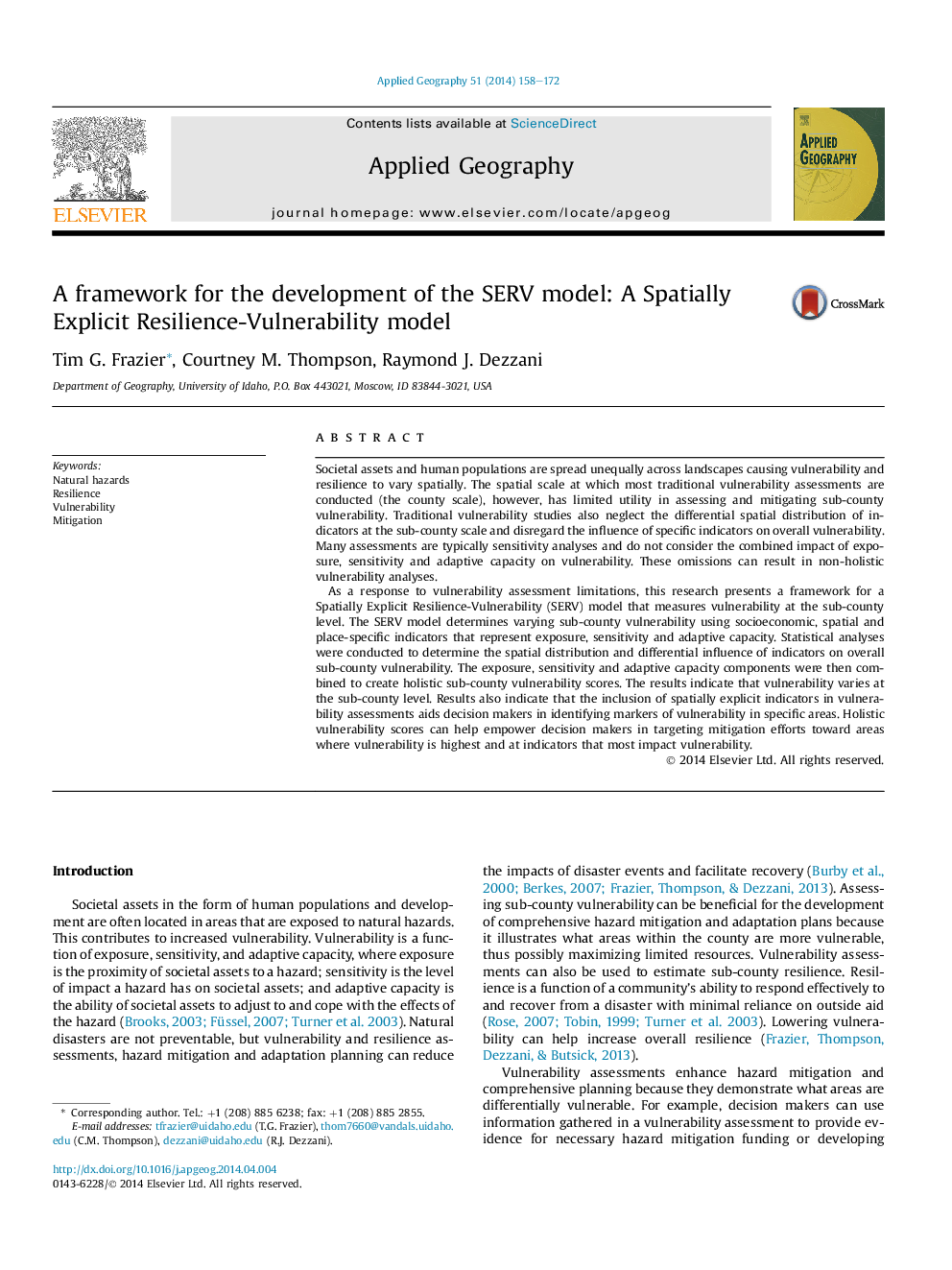| کد مقاله | کد نشریه | سال انتشار | مقاله انگلیسی | نسخه تمام متن |
|---|---|---|---|---|
| 83356 | 158718 | 2014 | 15 صفحه PDF | دانلود رایگان |
• Vulnerability is multi-scalar and differential across landscapes.
• Place-specific indicators help identify causes of vulnerability in specific areas.
• Including all components of vulnerability enhances vulnerability assessments.
• Spatial autocorrelation can influence the presence and intensity of vulnerability.
• The SERV model can aid planners in targeting areas with greater vulnerability.
Societal assets and human populations are spread unequally across landscapes causing vulnerability and resilience to vary spatially. The spatial scale at which most traditional vulnerability assessments are conducted (the county scale), however, has limited utility in assessing and mitigating sub-county vulnerability. Traditional vulnerability studies also neglect the differential spatial distribution of indicators at the sub-county scale and disregard the influence of specific indicators on overall vulnerability. Many assessments are typically sensitivity analyses and do not consider the combined impact of exposure, sensitivity and adaptive capacity on vulnerability. These omissions can result in non-holistic vulnerability analyses.As a response to vulnerability assessment limitations, this research presents a framework for a Spatially Explicit Resilience-Vulnerability (SERV) model that measures vulnerability at the sub-county level. The SERV model determines varying sub-county vulnerability using socioeconomic, spatial and place-specific indicators that represent exposure, sensitivity and adaptive capacity. Statistical analyses were conducted to determine the spatial distribution and differential influence of indicators on overall sub-county vulnerability. The exposure, sensitivity and adaptive capacity components were then combined to create holistic sub-county vulnerability scores. The results indicate that vulnerability varies at the sub-county level. Results also indicate that the inclusion of spatially explicit indicators in vulnerability assessments aids decision makers in identifying markers of vulnerability in specific areas. Holistic vulnerability scores can help empower decision makers in targeting mitigation efforts toward areas where vulnerability is highest and at indicators that most impact vulnerability.
Journal: Applied Geography - Volume 51, July 2014, Pages 158–172
